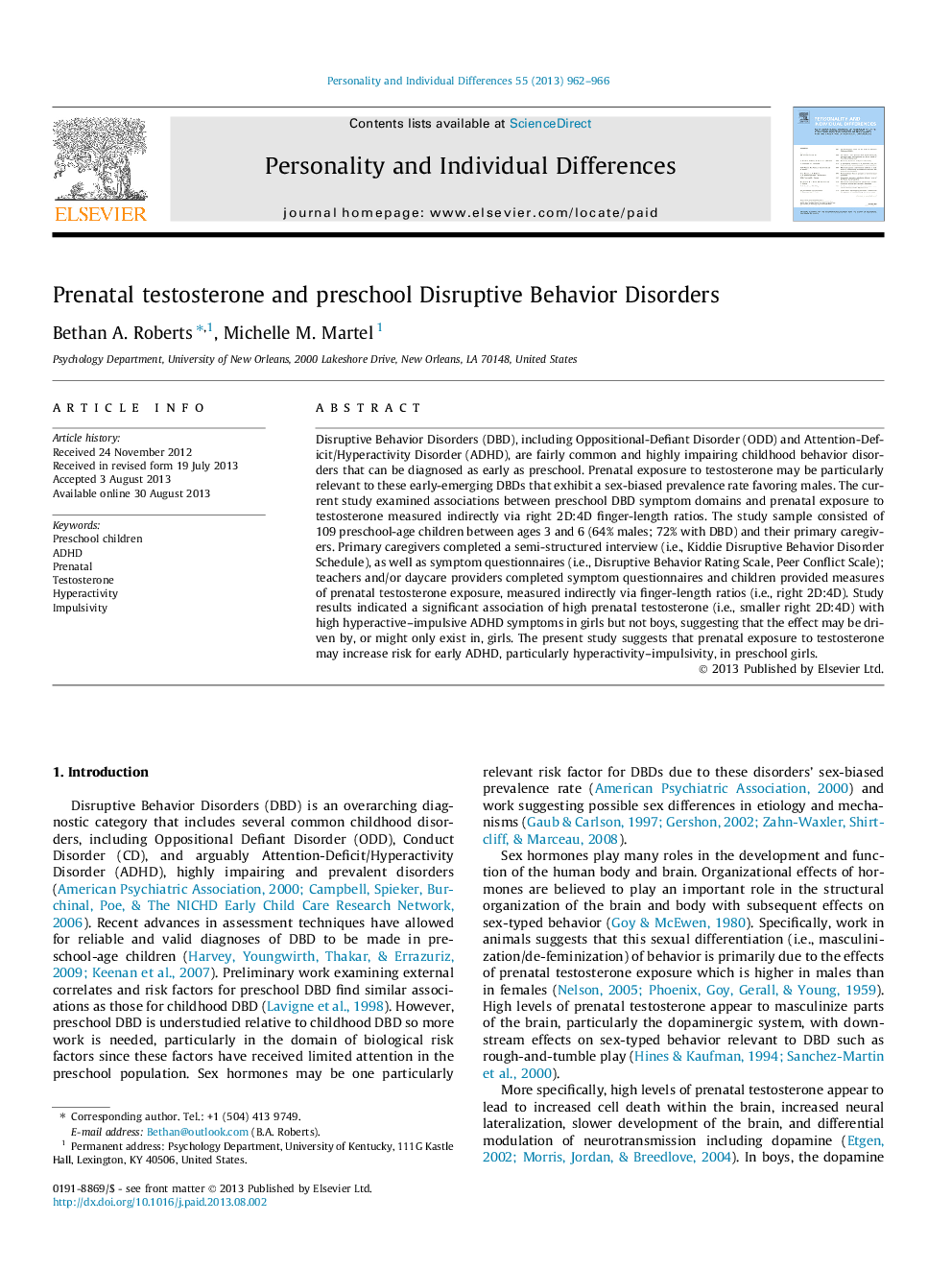| کد مقاله | کد نشریه | سال انتشار | مقاله انگلیسی | نسخه تمام متن |
|---|---|---|---|---|
| 891049 | 914020 | 2013 | 5 صفحه PDF | دانلود رایگان |

• We examined the relationship between prenatal testosterone and DBD among preschool children.
• Finger length ratios were measured as an indicator of prenatal testosterone levels.
• Smaller ratios were associated with greater hyperactive/impulsive symptoms in girls.
• Results suggest that high prenatal testosterone may be a risk factor for childhood ADHD.
Disruptive Behavior Disorders (DBD), including Oppositional-Defiant Disorder (ODD) and Attention-Deficit/Hyperactivity Disorder (ADHD), are fairly common and highly impairing childhood behavior disorders that can be diagnosed as early as preschool. Prenatal exposure to testosterone may be particularly relevant to these early-emerging DBDs that exhibit a sex-biased prevalence rate favoring males. The current study examined associations between preschool DBD symptom domains and prenatal exposure to testosterone measured indirectly via right 2D:4D finger-length ratios. The study sample consisted of 109 preschool-age children between ages 3 and 6 (64% males; 72% with DBD) and their primary caregivers. Primary caregivers completed a semi-structured interview (i.e., Kiddie Disruptive Behavior Disorder Schedule), as well as symptom questionnaires (i.e., Disruptive Behavior Rating Scale, Peer Conflict Scale); teachers and/or daycare providers completed symptom questionnaires and children provided measures of prenatal testosterone exposure, measured indirectly via finger-length ratios (i.e., right 2D:4D). Study results indicated a significant association of high prenatal testosterone (i.e., smaller right 2D:4D) with high hyperactive–impulsive ADHD symptoms in girls but not boys, suggesting that the effect may be driven by, or might only exist in, girls. The present study suggests that prenatal exposure to testosterone may increase risk for early ADHD, particularly hyperactivity–impulsivity, in preschool girls.
Journal: Personality and Individual Differences - Volume 55, Issue 8, November 2013, Pages 962–966